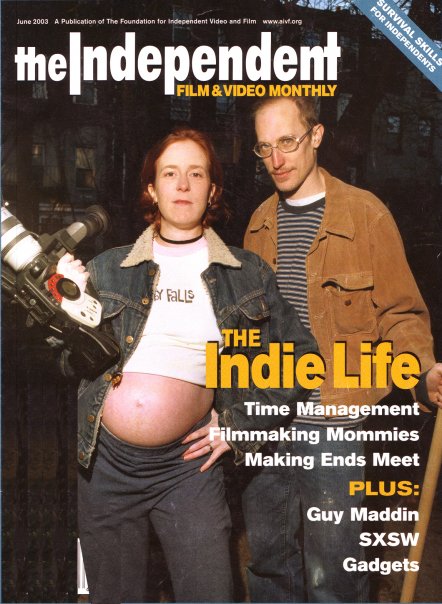22 Oct The Importance of Time
Half-Cocked – Guiloteens scene from rumur on Vimeo.
The modern world is fast paced and full of deadlines. Media Makers are often expected to create work immediately, and to communicate information ever more succinctly. People want their news fast and clear. Unfortunately, things are never as simple as we want them to be. As filmmakers, we often face difficulties because the stories we tell are not all that clear. They also take us a long time to put together.
Over the course of nearly 2 decades each film that we have made has taken longer to produce. Our first feature film, a fiction narrative called “Half-Cocked”, took less than a year from when we got the idea to completion. I was reflecting on this the other day. Part of the reason we were able to get it done was that I simply didn’t know better. Still, we made the next one fairly quickly as well. Once we started making documentaries things slowed down quite a bit. Our most recent films, “Who took Johnny” and “Battle for Brooklyn”, each took about 8 1/2 or nine years to complete. The one we are working on now, “All the Rage”, will have taken us well over a decade before we are finished.
Realities of parenthood and funding have contributed to the length of time that it takes us to complete each film. However, in the end, that breadth of time adds a great deal of gravity to the work. Time heals wounds and it also creates the space for more complex understanding. Often times it is only through the scrim of time that we can have the critical distance necessary to see the full weight of cultural forces that were at play in a certain time-frame.
This issue is especially profound in our current documentaries. The first, “All the Rage”, is about the work of Dr. John Sarno. The cultural understanding in relation to mind body medicine has shifted in such a profound way that it was almost impossible to imagine making the film when we first started in 2004. At that point if I were to suggest to someone that the back pain that they had was related to their emotions I was often met with not only disbelief but also anger.
In fact this resistance made it very difficult for us to find patients to bring to Dr. Sarno that we might follow. Over the course of these 10 years we have also applied for about 40 grants for the film and we have not received any of them. With no funding and such resistance on the cultural level to the film we were trying to make with floundered for many years.
The other documentary that we started in 2006, “Conception”, focuses on the relationship between nature and nurture, and more specifically the ethics and realities of donor conception. We have followed several different stories over the course of this project and the time spent will allow us to capture a complexity that would not have been possible had we rushed the film to completion.
We began “All the Rage” because I had a personal experience visiting Dr. Sarno after my back pain got so severe I was told that I needed to have surgery. Luckily for me my father had read his book “Healing Back Pain” in the late 80s and his back problems improved dramatically. A few years later my brother was told he had to have part of his collar bone carved away in order to free the nerves that led to his hand because he was having trouble typing and driving. My father insisted that he go see Dr. Sarno and he too improved quite dramatically. I read Dr. Sarno’s book at that point and banished my own recurrent back problems for nearly 10 years. However the pressures of owning a home, raising a two-year-old, and being an independent filmmaker, got the better of me and I ended up in his office.
The breadth of my own personal experience made it very easy for me to understand what he was talking about and I improved, though less dramatically. I still struggled with these issues for many years. In fact part of the narrative of our film is my own effort to get better. Unfortunately, three years ago, I was once again slammed to the floor with terrible pain. It had been on the back burner for nine years but once I hit the floor I knew we had to make this film.
The good news was as soon as we started back up on the project we could see that a dramatic cultural shift had taken place over the past five years. The pace of that shift has accelerated over the last three years. Now when we bring up the film almost everybody quickly acknowledges that they believe that the mind-body connection is much stronger than the medical community recognizes. In addition many other practitioners in other fields had started to embrace this idea in a robust way. Three years ago the Google alert that I had for chronic pain was mostly PR news releases about device manufacturers, pain medications, or pain clinics. This pattern painted a very grim picture. However, today more of the articles in my Google alert refer to studies linking stress and pain, and they deal with treatments that are mind-body related.
Ten years of footage will allow us to track this cultural reality in a way that should illuminate how profound cultural understandings are in relation to how we relate to the world. The same is true of our film “Conception”. When we started the film gay couples were just beginning to have kids in larger numbers. Now it is fairly common. As such the film will illustrate how profoundly cultural attitudes can change in a short period of time.


No Comments